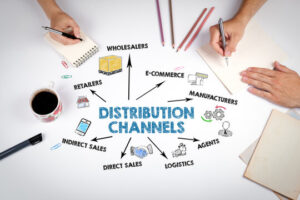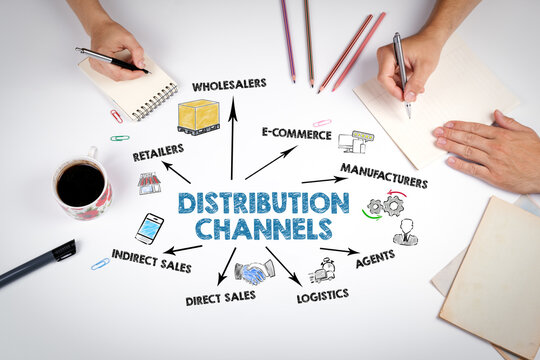Table of Contents
ToggleDecoding Distribution Channels: The Pathway to Market Success

In the intricate world of marketing, distribution channels play a pivotal role in ensuring that products reach their intended consumers efficiently and effectively. A distribution channel is the chain of businesses or intermediaries through which a good or service passes until it reaches the end consumer. This pathway can include wholesalers, distributors, retailers, and even the internet. Understanding and optimizing these channels is crucial for businesses aiming to maximize their market reach and customer satisfaction.
What Are Distribution Channels?
Distribution channels, also known as marketing channels, are the routes taken by a product from the manufacturer to the final consumer. These channels can be broadly categorized into two types:
- Direct Channels: The manufacturer sells directly to the consumer without intermediaries. This can be through physical stores, online platforms, or direct mail.
- Indirect Channels: The manufacturer uses one or more intermediaries to get the product to the consumer. These intermediaries can include wholesalers, distributors, agents, and retailers.
Types of Distribution Channels:
- Direct Distribution
- Definition: Direct distribution channels involve a direct connection between the manufacturer and the consumer.
- Advantages: Better control over the brand, direct customer feedback, higher profit margins.
- Examples: Company-owned stores (like Apple), e-commerce websites (like Amazon selling its products).
- Indirect Distribution
- Definition: Indirect distribution channels involve one or more intermediaries who help move the product from the manufacturer to the consumer.
- Advantages: Wider market reach, shared marketing and distribution costs, established networks.
- Examples:
- Wholesalers: Buy in bulk from manufacturers and sell to retailers.
- Retailers: Sell directly to the public, either through physical stores or online.
- Distributors: Specialized intermediaries who manage distribution logistics for manufacturers.
Factors Influencing the Choice of Distribution Channels:
Choosing the right distribution channel is critical and depends on several factors:
- Nature of the Product: Perishable goods often require faster, more direct distribution channels. Durable goods may use longer channels.
- Market Considerations: The target market’s size, location, and buying habits can dictate the choice of distribution channel.
- Company Goals and Resources: Companies with robust logistics capabilities may opt for direct distribution, while those seeking extensive reach may use indirect channels.
- Cost and Efficiency: The cost of different channels and their efficiency in delivering products to consumers play a significant role.
- Competitive Landscape: The distribution strategies of competitors can influence channel choices.
Trends:
The landscape of distribution channels is evolving with technological advancements and changing consumer behavior. Some key trends include:
- Omnichannel Distribution: Businesses are increasingly adopting omnichannel strategies, offering seamless experiences across multiple channels, including physical stores, online platforms, and mobile apps.
- E-commerce Growth: The rise of e-commerce has significantly impacted distribution strategies, with many businesses shifting to online sales channels.
- Logistics and Supply Chain Innovations: Advances in logistics and supply chain technologies, such as automation and real-time tracking, are enhancing the efficiency of distribution channels.
- Sustainability: Eco-friendly distribution practices are gaining importance, with businesses seeking to reduce their carbon footprint through green logistics and sustainable packaging.
Challenges:
- Channel Conflict: Disputes between channel partners, such as price competition and territorial disagreements, can arise.
- Cost Management: Managing the costs associated with multiple intermediaries can be complex.
- Maintaining Control: Ensuring brand consistency and customer experience across different channels can be challenging.
- Adaptability: Rapid market changes require distribution channels to be flexible and adaptable.
Conclusion
The lifelines that connect businesses with their customers. By understanding the different types of distribution channels, factors influencing their choice, and the latest trends, businesses can design effective strategies to enhance their market reach and customer satisfaction. In a dynamic market environment, staying adaptable and responsive to changes is key to leveraging distribution channels for long-term success. Whether through direct or indirect means, the ultimate goal remains the same: delivering value to the customer in the most efficient and effective way possible.


